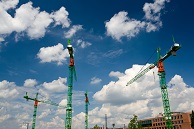GST-registered real estate developers of a mixed development (e.g. commercial and residential) may face the risk of higher compliance cost because of incorrect GST treatments for such projects. As transactions in the real estate industry are usually of high value, the financial consequences may also be significant.
In the following paragraphs, we look at essential GST principles that govern the unique input tax claims for mixed development projects.
Generally, GST incurred during the sale of a mixed development falls into 3 categories:
1. Directly linked to the non-residential aspect
Based on IRAS' existing guidelines, GST tagged to purchases (including those shared below) directly linked to taxable supplies (e.g. where GST of 7% or 0% is charged) is claimable:
- Furniture and fittings bought;
- purchase and construction of non-residential part of the development; and
- maintenance of the facilities and common areas.
2. Directly linked to residential aspect
On the other hand, GST on purchases relating to exempt supplies made (e.g. proceeds received from the sale or lease of residential property, or interest on inter-company loan) is not claimable. This includes:
- Fixtures (e.g. air conditioners or built-in cupboards) that are permanently attached to the residential properties; and
- purchase and construction of the residential part of the development.
3. General expenses that do not fall within (1) & (2) above
GST incurred on general expenses (e.g. advertising or legal fees), commonly known as residual input tax ("RIT"), is subject to apportionment. If the mixed development has already obtained the Temporary Occupation Permit, the non-construction related RIT is apportioned using the formula below ("Prescribed Method"):
| Claimable RIT = | Value of Taxable Supplies | X RIT |
| Value of Total Supplies |
The developer of a mixed development should apply the Prescribed Method unless an alternative method is approved by the Comptroller of GST ("CGST")
Alternative Method
Should the developer of the mixed development feel that the prescribed method does not result in a fair claimable RIT value, an alternative method could be proposed to the CGST. The CGST would consider and approve the alternative if the CGST agrees this produces a fairer RIT apportionment.
In practice, alternative methods which could be approved by the CGST include:
- Floor area - those used to make taxable supplies over the total floor area
- Staff number - personnel employed in the taxable business over the total staff employed
- Number of transactions - the number of taxable transactions in a prescribed accounting period over the total number of transactions in a prescribed accounting period
Common GST mistakes made by developers
- Not claiming GST incurred on the purchase of the non-residential part of a mixed development which will be rented out separately for a fee (e.g. car park or function room of a serviced apartment).
- Claiming of GST incurred in the purchase of fixtures that are attached permanently to the residential properties (e.g. built-in wardrobes or wall-mounted air conditioners), which is not allowed.
- Lack of awareness of the alternative method should the prescribed method not provide a fair result.
WE SPECIALISE IN SERVING REAL ESTATE & CONSTRUCTION BUSINESSES

Each industry is unique and the hallmark of a great business partner is the ability to understand and identify the needs and goals of each business in its own context. Our vertical industry units are designed to help companies grow through tailored services with insightful, practical and effective advice.
Learn more about our Real Estate & Construction industry unit!


